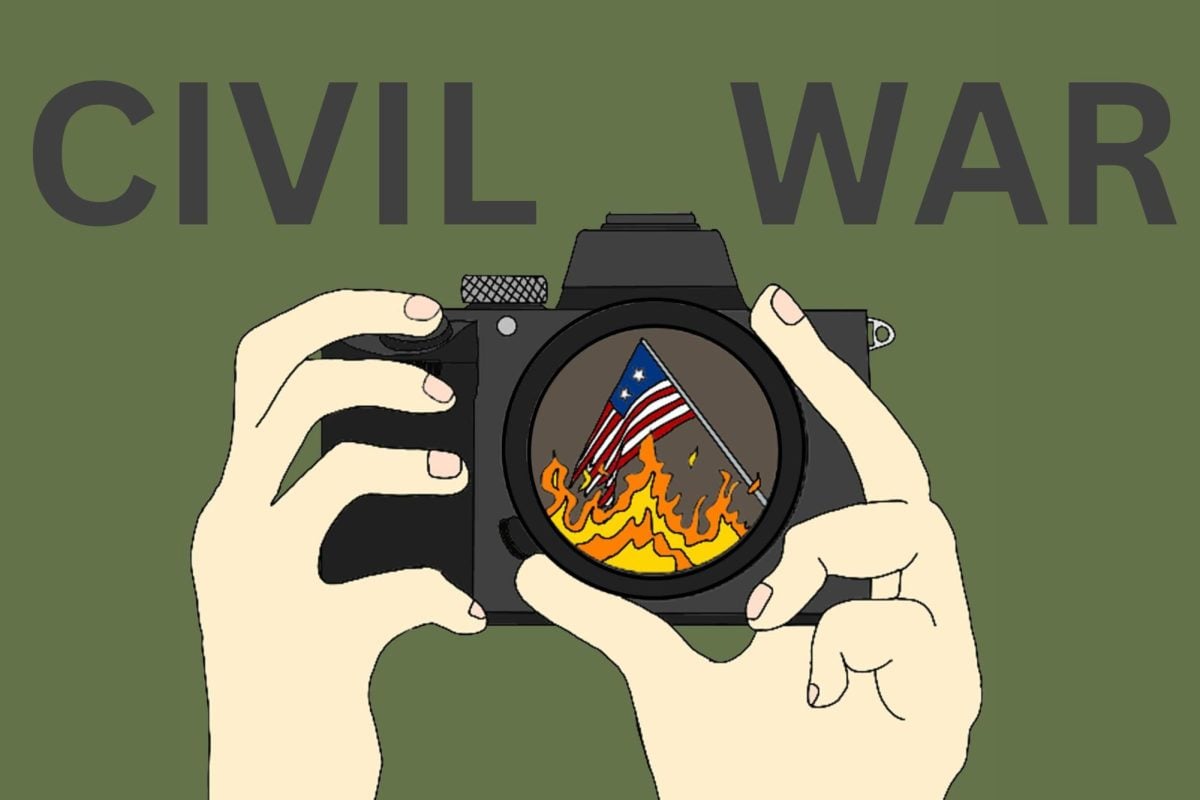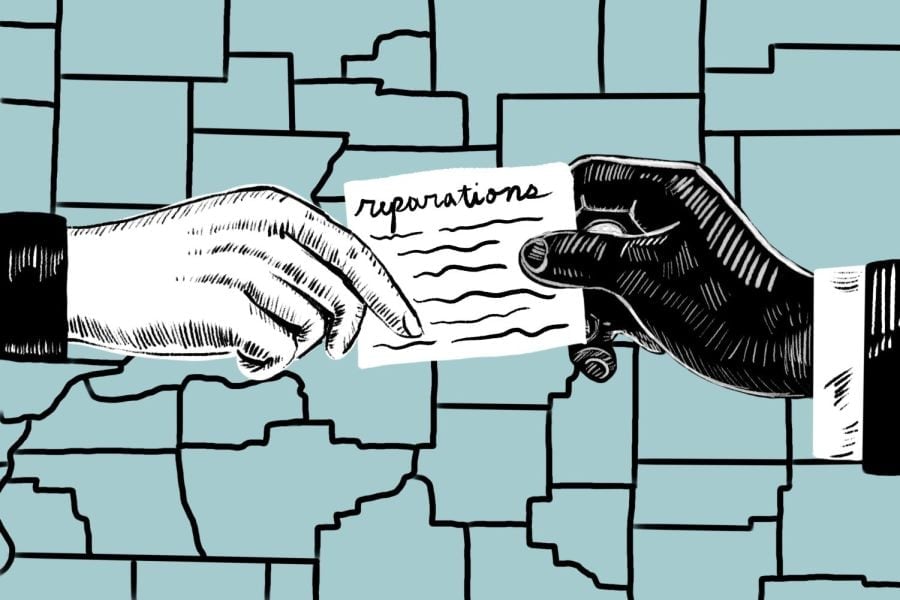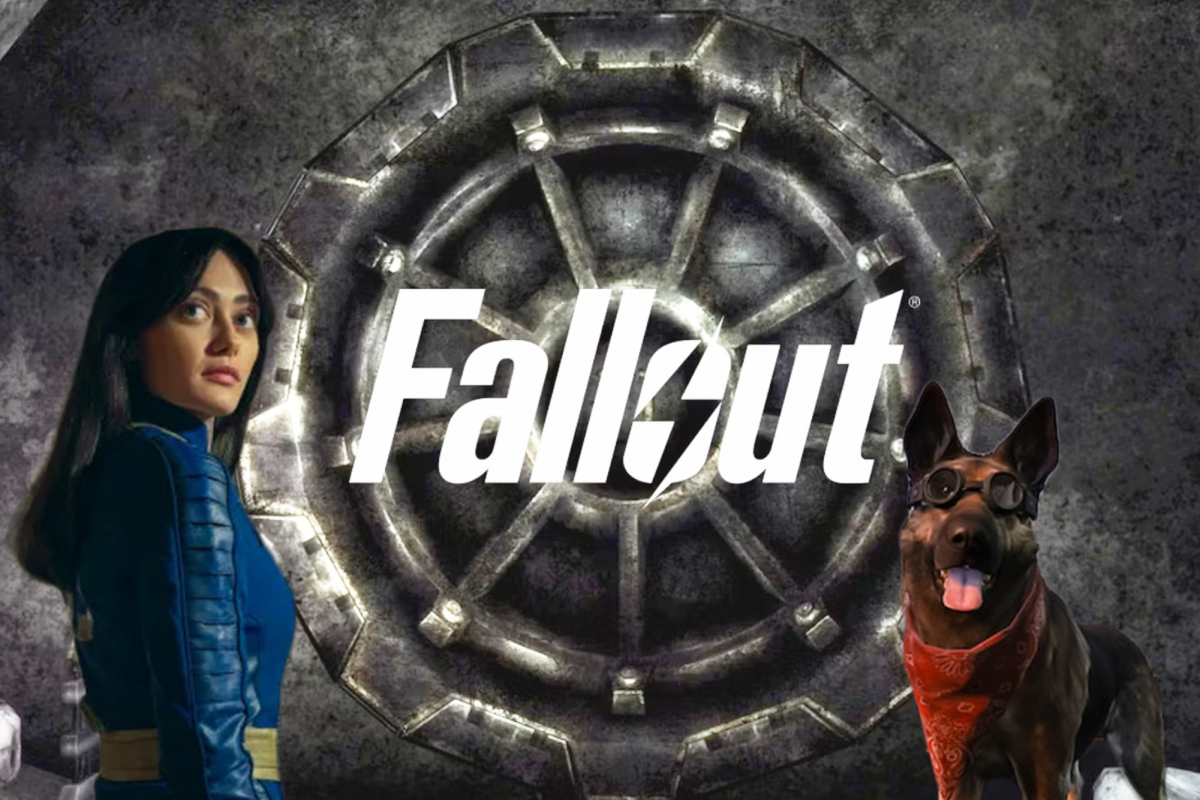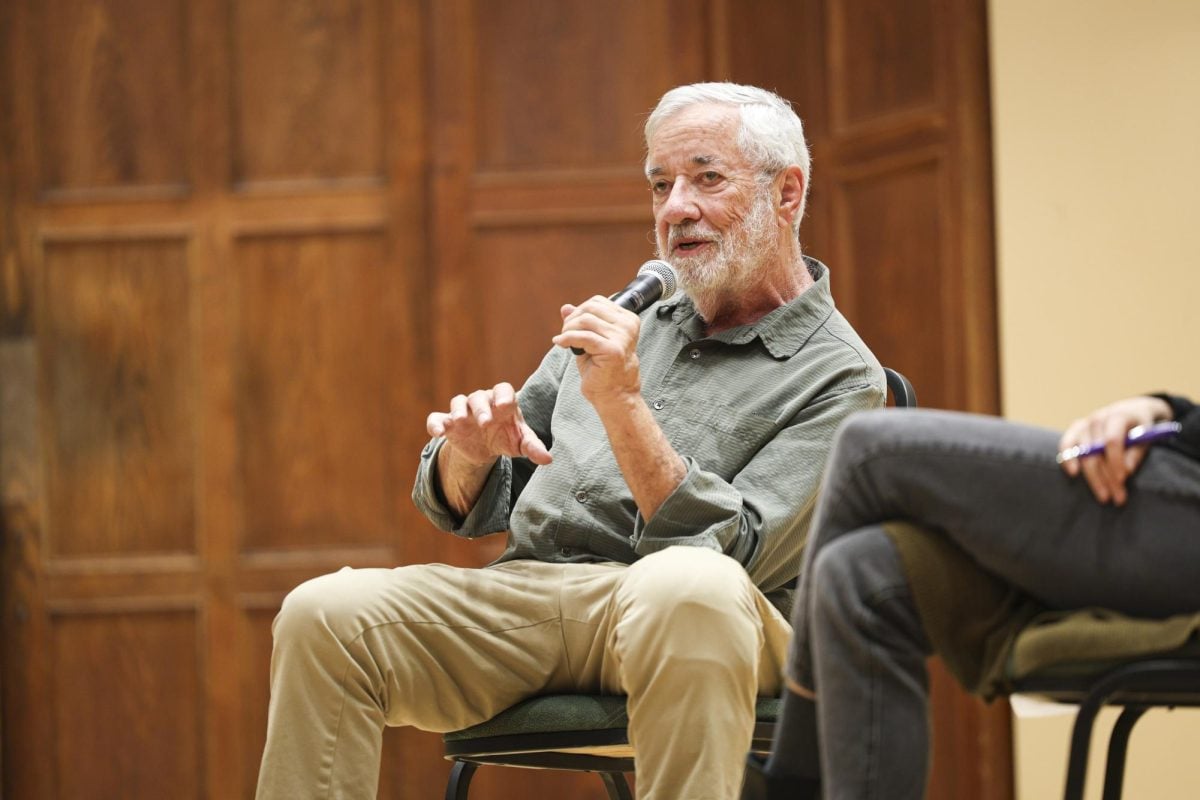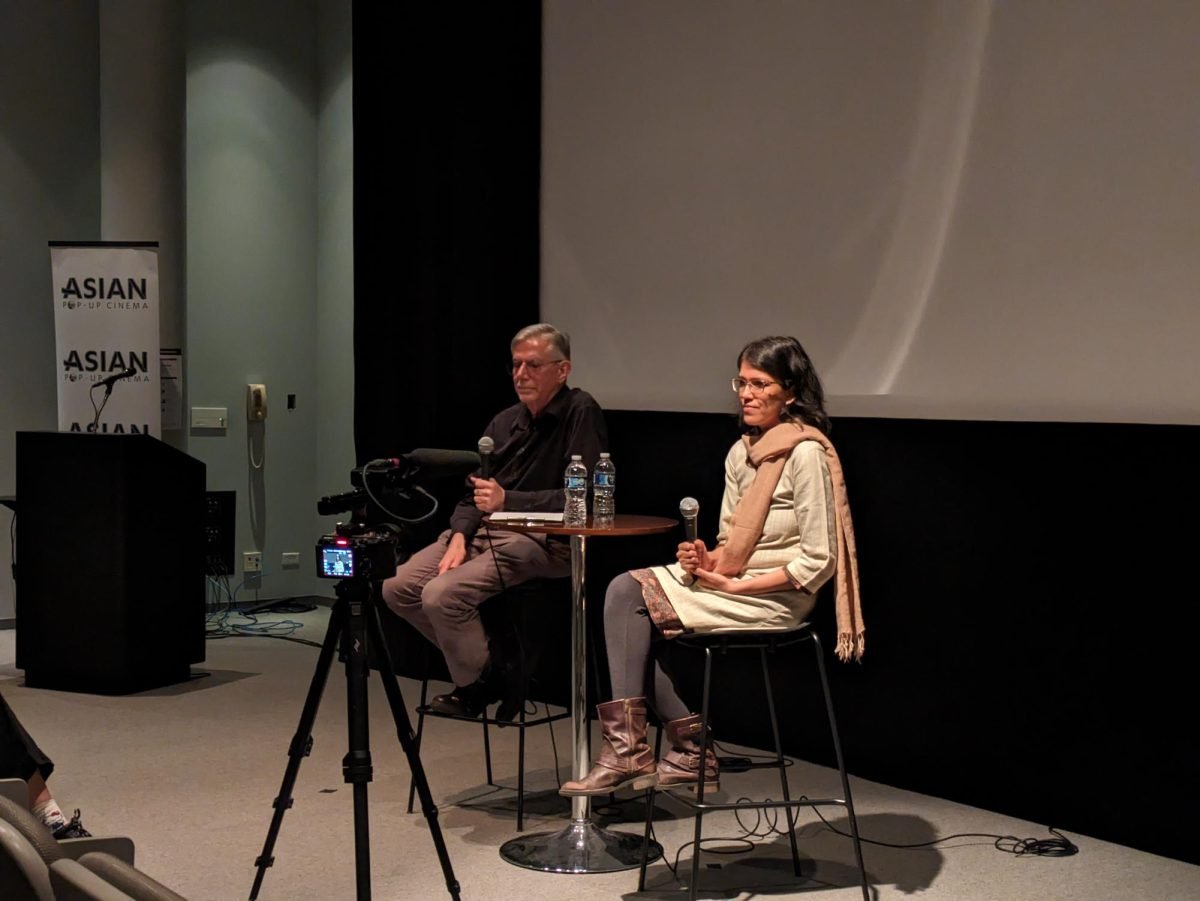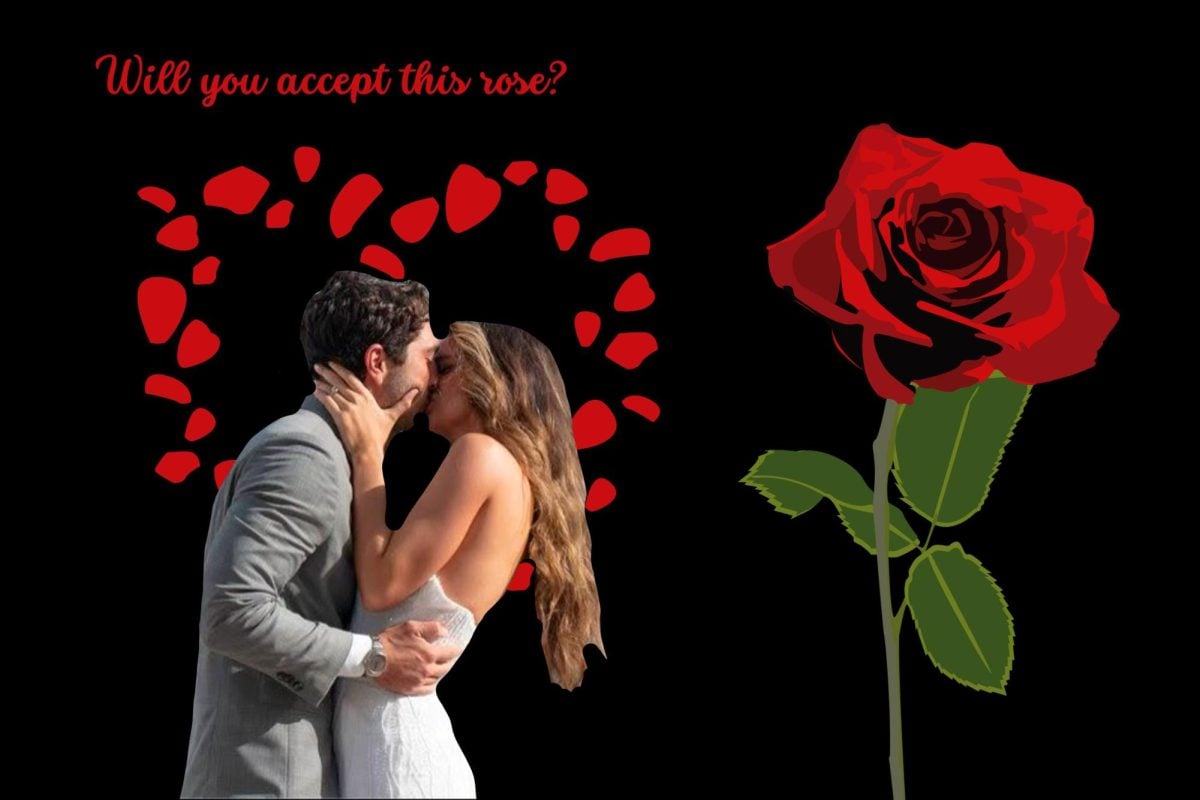This review contains mentions of violence and spoilers.
When the apocalypse comes, there will be signs, and they will apparently come in the form of Jesse Plemons wearing pink Party City glasses.
On April 12, 2024, English director Alex Garland’s fourth feature-length film, “Civil War,” was released to wide screens across the country. Garland, known for his exquisite work within the science-fiction genre with the likes of “Ex Machina” and “Devs,” turned his gaze to a dystopian United States.
Befitting its title, “Civil War” is centered around a destructive conflict between an authoritarian U.S. government and the Western Forces — the combined militaries of Texas and California.
While the trailer and title may suggest otherwise, the film is not a typical all-gas-no-breaks war movie. It’s not “Saving Private Ryan” nor “1917” but closer to an “Apocalypse Now” style, save some of the legendary quality. “Civil War” focuses on the perspective of four photojournalists chasing the conflict.
If the idea for a semi-modern American civil war film was given to 100 directors, maybe three of them would think of the journalism angle. It’s an astute choice by Garland.
The journalists, portrayed by Wagner Moura, Kirsten Dunst, Cailee Spaeny and Stephen McKinley Henderson, travel from New York City to Washington D.C. in their battered press car. They aim to score the final interview with the President — portrayed by Nick Offerman in an unmistakably Mar-a-Lago fashion — before the city falls.
Lee (Dunst) is a hardened, seemingly world-renowned figure who Jessie (Spaeny) holds as one of her personal heroes. The film attempts to establish some sort of a relationship between the two but ultimately fails in a fairly unremarkable way. While both Dunst and Spaeny turn in good performances, they’re given cookie-cutter character archetypes with played-out emotional beats.
The first act of the film is lackluster for similar reasons. It seems like it was supposed to function as character and plot exposition, while providing the viewer with frankly stale characters and a glorified SparkNotes plot.
While the beginning may have been underwhelming, “Civil War” is at its best in its astutely done but upsetting second act and in its roaring third act.
The middle of this film is on fire — quite literally at points. It effectively turns into an on-the-road movie as the four journalists drive through the ravaged east coast, making a stop to camp at a dismantled JCPenney on their way to Washington D.C.
The last stop on their roadtrip plays like a nervous epinephrine injection as Jessie and two other journalists have been taken hostage by Plemons’ calm but erratically violent character. Plemons proceeds to ask them which type of “American” they are. He executes those with the answers he does not approve of. The scene concludes with one of the most upsetting shots of the film, as Jessie climbs out of a pit of bodies, stepping on the heads and limbs of citizens deemed “un-American.”
The road trip includes a plethora of other provoking stills. As the group drives through Pittsburgh, they pass a recently spray painted bridge awning that reads “GO STEELERS.” Two bodies are hung next to the message. Garland seems to prod at the American tone-deafness he believes would be present even in a conflict on home soil.
The third act, the Western Forces’ siege of Washington D.C., is the movie that fans got a taste of in the trailer. Fast-paced and adrenaline-inducing, the siege plays like a plane’s takeoff, and the altitude climb doesn’t relent.
While some of the creative choices made in “Civil War” are perplexing, the film is far from empty — it is a rich cultural text in the form of an electrified and upsetting action movie. Although some may be frustrated by the lack of a direct message, this is exactly Garland’s point.
Polarization arises from imposing one’s views on others and demonizing those who do not conform. Garland makes the specific choice to refrain from telling viewers exactly what to think. Audiences should respect him for it.
Email: [email protected]
Twitter: @JacksonWeier
Related Stories:
— Reel Thoughts: ‘Fallout’ goes out with a bang
— Swae Lee to headline Dillo Day, Mayfest announces
— Coachella 2024 sees big-name stars triumph and new talent emerge

